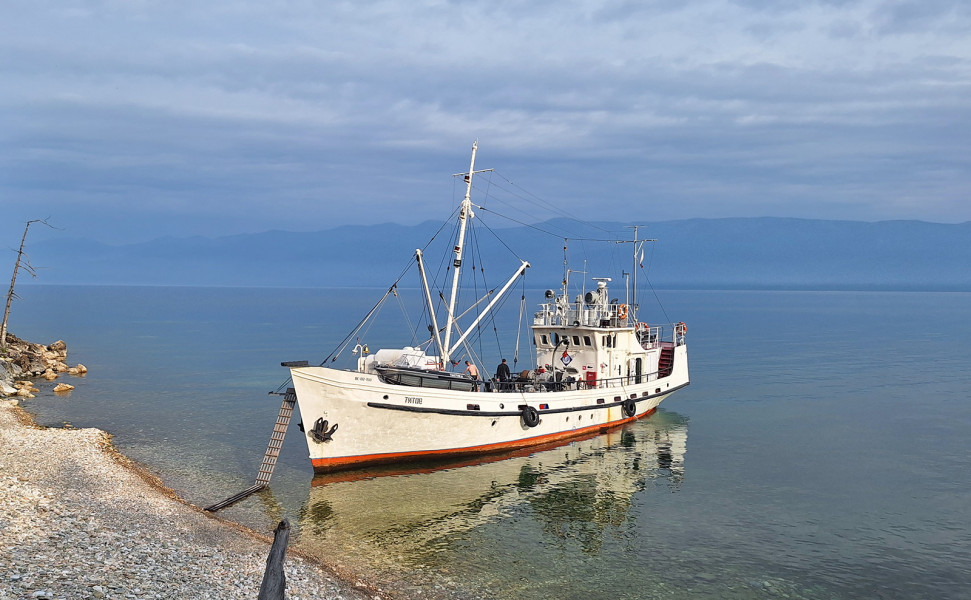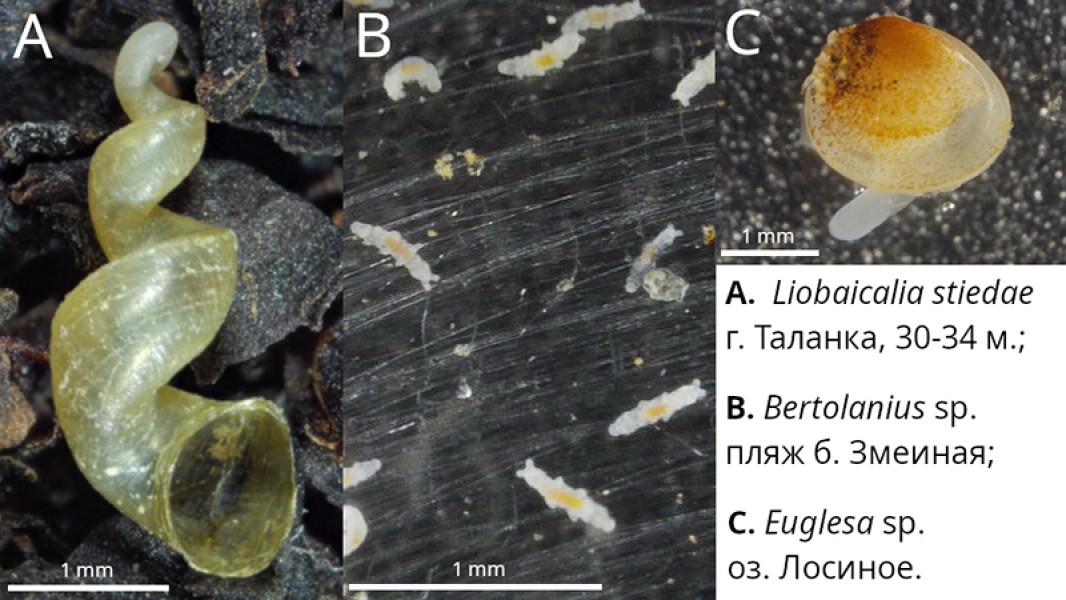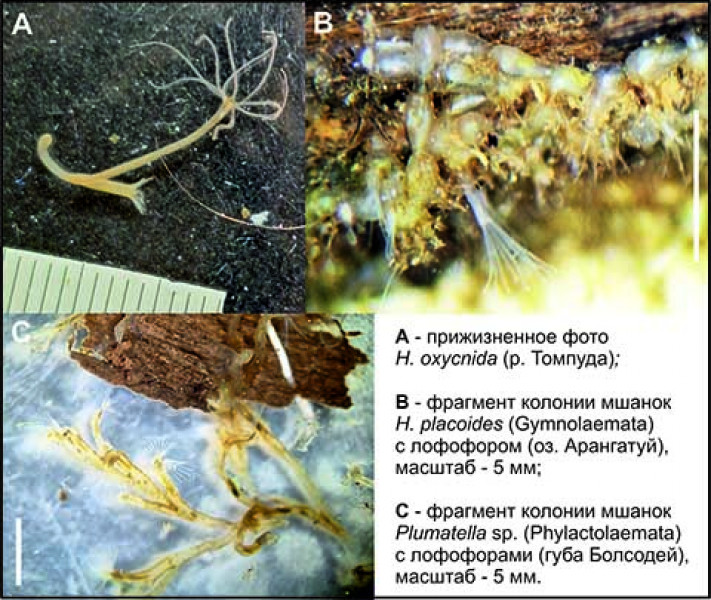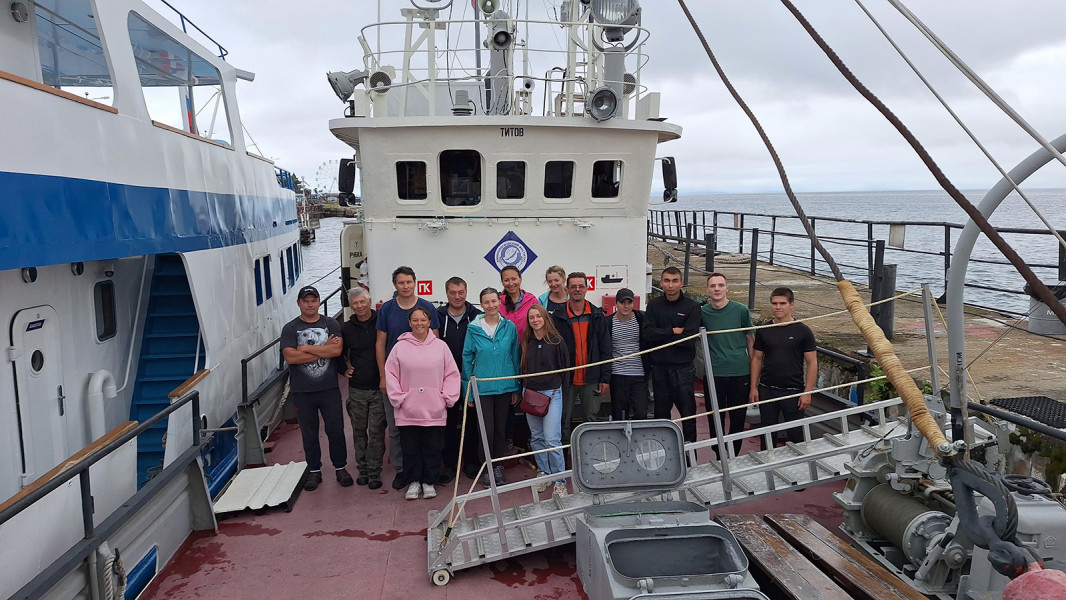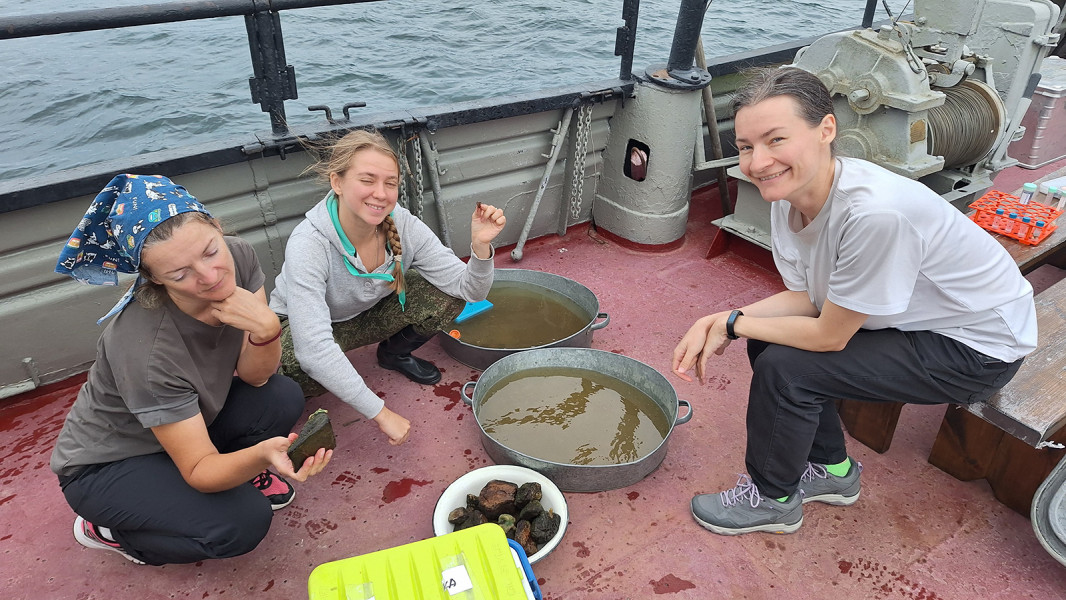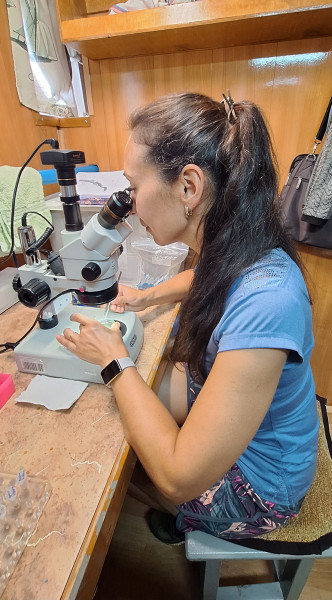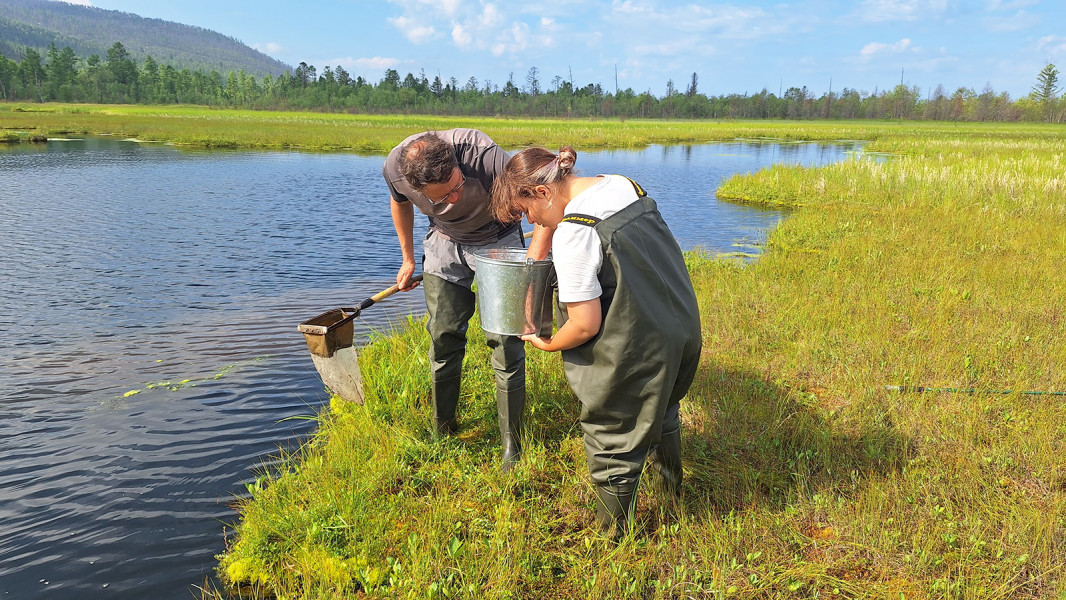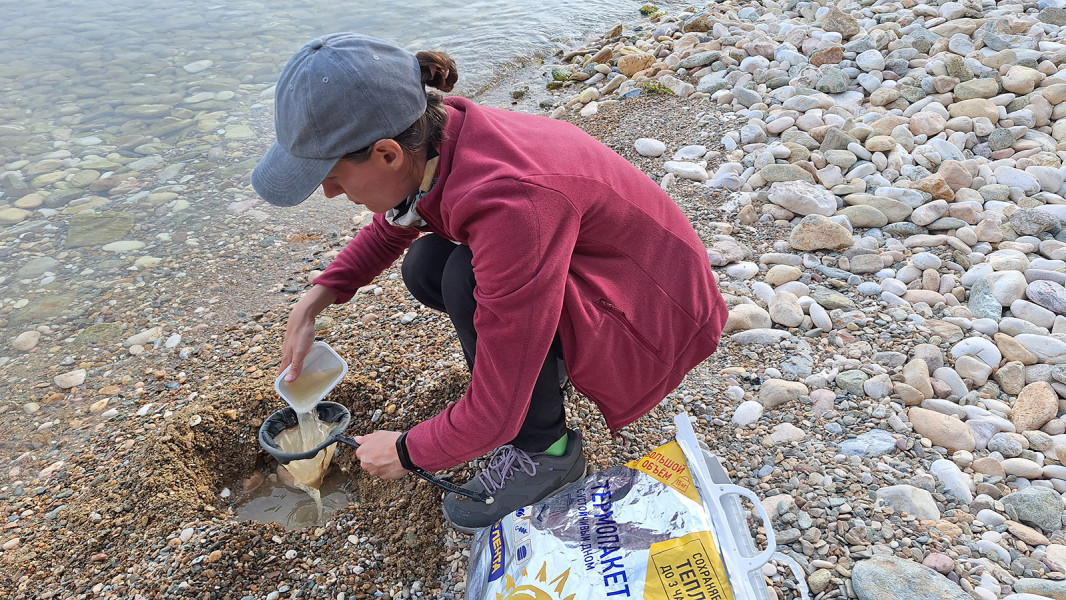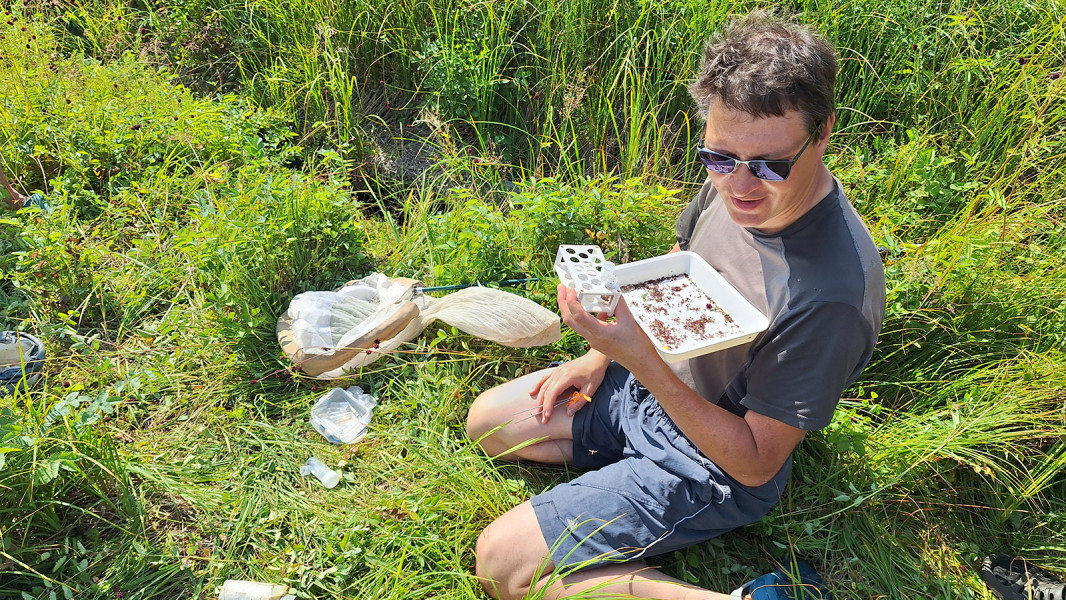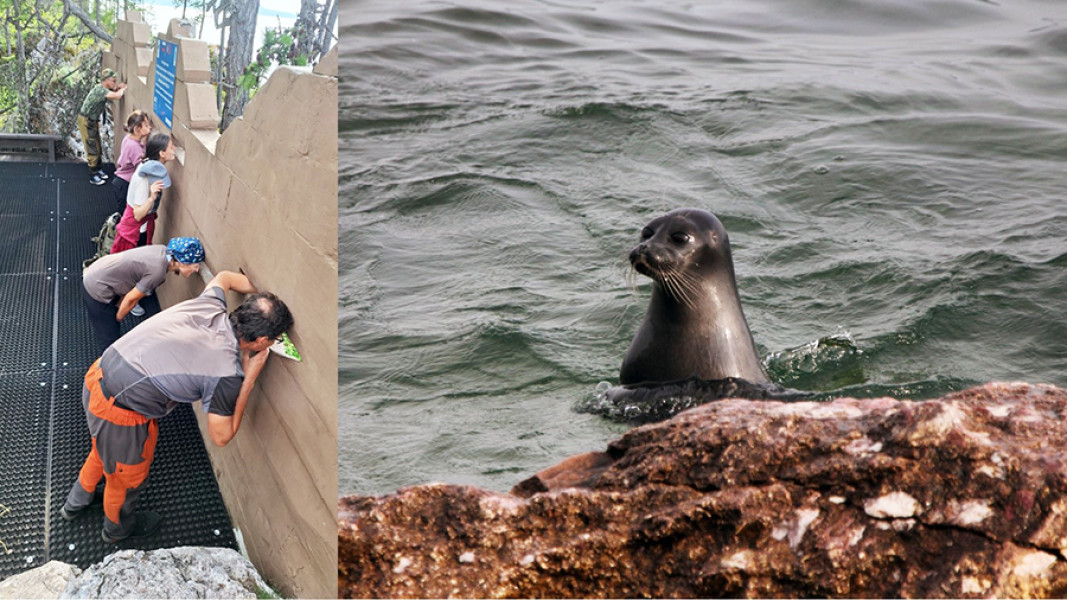Expedition onboard the R/V "Titov" on August 03-14, 2024
On August 03-14, 2024 onboard the R/V “Titov”, the field work was carried out along the eastern and western shores of Lake Baikal and adjacent water bodies.
During the expedition, 50 stations were covered, and representatives of different taxonomic groups of both endemic Baikal and Palaearctic faunas were collected.
To clarify the ranges and ecological preferences of the Baikal mollusks, the representatives of the endemic family Baicaliidae were collected. We managed to find 1 specimen of Liobaiсalia stiedae in Talanka, which corresponds to the northernmost point of detection of this species, whose range was considered to be only Southern basin of the lake. Significant genetic isolation of separate populations comparable to species differences in the family Baicaliidae, has previously been shown for this sedentary species. At Kocherikov Cape, a site where a mixture of southern and northern populations of the psammophilous species Korotnewia semenkewitschii was found, this species was collected on an uncharacteristic substrate, namely stones.
As part of the revision of the Baikal malacofauna, bivalves of the family Sphaeriidae and gastropods of the genus Valvata were collected at 10 and 6 stations, respectively, along the perimeter of Lake Baikal, as well as in lakes Arangatui, Zama, and Losinoe, and coastal lakes at Cape Bolsodei, Cape Kovrizhka, Cape Muzhinai, Cape Maly Solontsovy, and Bolshoy Solontsovy.
Water bears of the genus Bertolanius were sampled from interstitial waters at eight sites on the shoreline of Lake Baikal as well as from two bottom samples collected at depths of 5-10 meters. A minimum of 20 specimens were fixed from each sample for subsequent molecular-genetic, karyological, and morphological analyses.
To characterize larvae of caddis flies Baicalina nigrostriata, we collected samples at sites where the imaginal forms of the species were found, namely the northeastern coast and region of Maloe More Strait. Sampling was carried out by a bottom-sampler and dredger at depths of 10-20 m at five stations. DNA was extracted from abdominal segments of larvae in the laboratory of the R/V Titov for further species identification using the genetic barcoding method. The house and parts of the larvae with diagnostic characters were preserved in alcohol and transferred to specialists of LIN SB RAS for determination of the species by classical methods.
To study the species diversity and genetic polymorphism of bryozoans on the territory of the Baikal region in water bodies of the coastal-sor zone of Lake Baikal (Vydrino, Talanchanka River, Arangatui, Kudaldinskoye Lake, Losinoe Lake, Tompuda River, Bolsodei Bay, Kovrizhka Lake, Muzhinai Lake, the lake near Cape Maly Solontsovy, the lake near Cape Bolshoy Solontsovy, Lake Zama) the representatives of this group of hydrobionts belonging to two different classes Gymnolaemata and Phylactolaemata) were collected. We started to identify bryozoan species by microscopic analysis of their statoblasts as well as by genetic barcoding based on different genetic markers: COI, ITS1-5.8S-ITS2, 16S rRNA. Based on the results of taxonomic identification, full-genome sequencing will be conducted for some species to study the peculiarities of mitochondrial genome structure as well as to detect different groups of DNA repeats in nuclear genomes to study their functions and evolutionary aspects of their appearance in bryozoan genomes. We continued to study the population genetic structure of four hydra species in the Baikal region; for this purpose, we managed to collect material in three new locations: the coastal zone of Lake Baikal near Vydrino, the Talanchanka River, and Lake Kudaldinskoye. During the expedition, observations of bats at 9 points of the ship`s overnight anchorages were made using ultrasonic detector and visually (Maksimikha, Peshcherka Bay (Bolshoy Ushkaniy Island), between Zmeyovaya Bay and Krugly Island, mouth of the Kabanya River, mouth of the Tompuda River, Ayaya Bay, Muzhinai logjam, Kocherikovo, Zagli Bay, and Peschanaya Bay). It was observed that at least two species of chiropterans (Myotis petax, Eptesicus nilssonii) were engaged in foraging activities at a distance of up to 8,200 m from the shore. Insects and amphipods were sampled to assess the composition of potential food items for chiropterans above Lake Baikal. A total of 18 bats belonging to two species (Myotis petax – 17, Myotis brandtii – 1) were captured from the ship using a transportable trap and spider net on the shore as well as in the tunnel on the shore at the mouth of the Anga River. Biological material was taken from the bats for genetic identification of species and excrement was taken for virological study and diet analysis. In addition, 8 samples of bat excrement were collected at 6 sites (Bolshoi Ushkaniy Island, Davsha, Khakusy, Cape Kotelnikovsky, Cape Bolshoi Solontsovy, Peschanaya Bay) to analyze feeding patterns and for virological study. Biological material for assessment of trophic relationships of chiropterans with aquatic organisms of Lake Baikal was submitted for cameral treatment.
To study entomofauna and ecosystems of hot springs, field work was carried out in Zmeinaya Bay (Zmeiniye or Zmeyovye), in Davsha settlement (Davshinskiye), in Khakusy Bay (of the same name), and near Cape Kotelnikovskiye (Kotelnikovskiye). The adult insects were collected at each of the four sites using a combination of mowing with an entomological net, an exhauster, and hand picking near water. The aquatic and semi-aquatic fauna were collected from the main habitats of hot springs and streams (silt, sand, turf, moss cushions, algal mats, and other substrates) using a washing process with water on a sieve column and subsequent flotation of the collected material in a table salt solution. Some of the collected larvae and pupae of the dipterans were preserved alive to produce adult insects, which will enable further use of these materials for accurate species determinations and to indicate the biotopes of development of the respective species. Substrates were collected from the main semi-aquatic biotopes for subsequent rearing of imago insects directly from these substrates. The range of water temperature, pH, and salinity was measured for each biotope studied; mass forms of higher plants were collected.
As part of the study of the entomofauna of fast piedmont watercourses, three watercourses were examined: the Kabanya River (6 km above the mouth), an unnamed stream in the southern part of Ayaya Bay (200 m above the mouth), and the Kotinka River (in B. Koty settlement, 100-200 m above the mouth). At these three sites, material of larvae and pupae of amphibiont insects, including dipterans, was collected from rocks on the stream.
At the end of the expedition, we will continue work with live material in the laboratory to breed adult insects (mainly diptera) from larvae and pupae; this work will be largely completed by summer 2025. Besides, the work on sorting the collected materials into taxonomic groups, their labeling, and identification of the collected material has been started.




